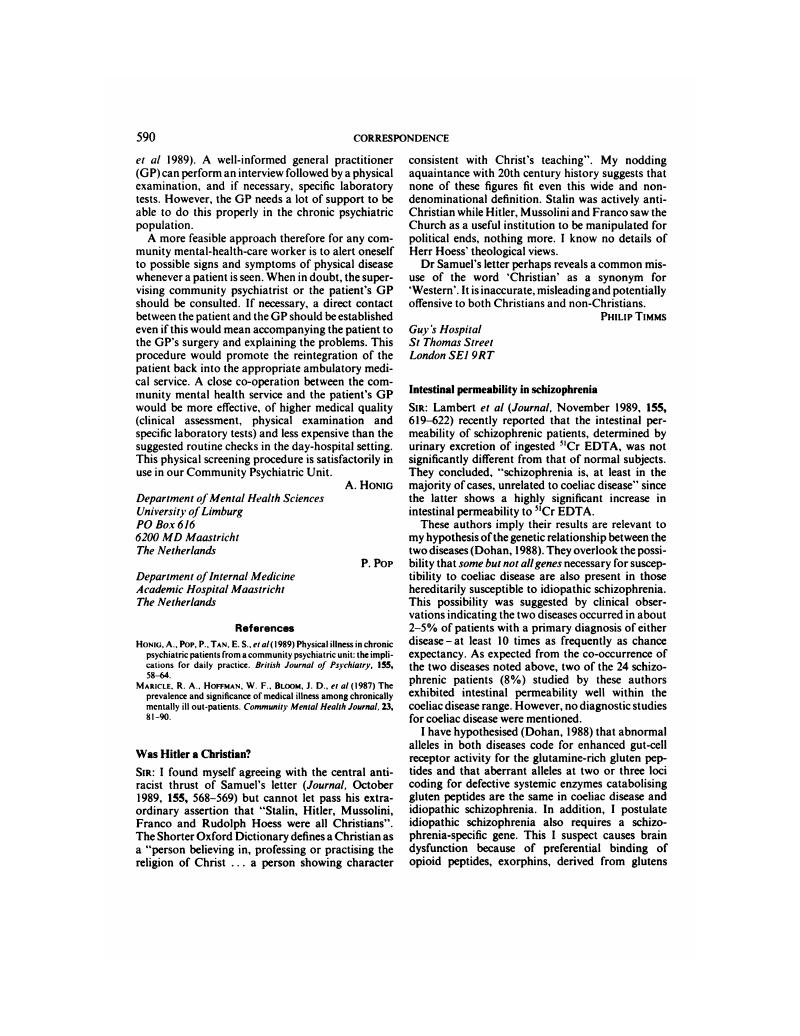No CrossRef data available.
Article contents
Intestinal permeability in schizophrenia
Published online by Cambridge University Press: 03 January 2018
Abstract
An abstract is not available for this content so a preview has been provided. As you have access to this content, a full PDF is available via the ‘Save PDF’ action button.

- Type
- Correspondence
- Information
- Copyright
- Copyright © Royal College of Psychiatrists, 1990
References
Bruce, S. E., Bjarnson, I. & Peters, T. J. (1985) Human jejunal transglutaminase: demonstration of activity, enzyme kinetics and substrate specificity with special relation to gliadin and coeliac disease. Clinical Science, 68, 573–579.Google Scholar
Dohan, F. C. (1988) Genetic hypothesis of idiopathic schizophrenia: its exorphin connection. Schizophrenia Bulletin, 14, 489–494.Google Scholar
Reichelt, K. L., Edminson, P. D. & Toft, K. G. (1985) Urinary peptides in schizophrenia and depression. Stress Medicine, 1, 169–181.Google Scholar
Thibault, L., Coulon, J.-F., Roberge, C., et al (1988) Changes in serum amino acid content and dopamine-β-hydroxylase activity and brain neurotransmitter interaction in cats fed casein with or without gluten or gliadin. Journal of Clinical Biochemistry and Nutrition, 4, 209–221.Google Scholar
Zioudrou, C., Streaty, R. A. & Klee, W. A. (1979) Opioid peptides from food proteins: the exorphins. Journal of Biological Chemistry, 254, 2446–2449.CrossRefGoogle ScholarPubMed





eLetters
No eLetters have been published for this article.